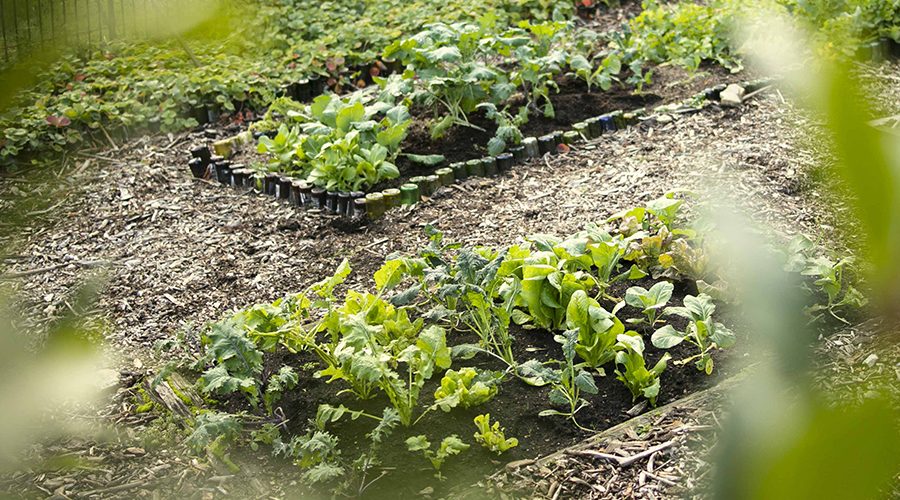This article takes a look at the next four or five weeks in the vegetable garden, through late September and early October, which is a time both for clearing up and putting beds away for winter, and for planting autumn crops to grow over the next few months…
Summer Clearing
Most summer plants will be coming to an end now, and can be pulled up to make way for autumn crops if you’re planning to keep growing. Alternatively, you may want to mulch empty beds and cover with black polythene, cardboard or similar for the next few months until you plant again in spring.
- Cut beans and peas down once they’ve come to an end – you can leave the roots in the ground as they are fairly rich in nitrogen and can break down in the soil, or you can bung the whole lot on the compost pile.
- Once you’ve harvested sweetcorn, pull up the plants. If you want to compost them, it’ll be better to chop them up or shred them before you add them to the pile.
- In the greenhouse – As temperatures start to cool, tomatoes will become more reluctant to ripen. You can try ripening indoors, or make green tomato chutney. Once you’ve harvested them, put the plants into the compost. Chillies and Peppers will keep going a little longer, so you can leave them unless you need the space for autumn crops.
- Check spring planted kale – if they have been badly hit with mildew, it’s best to pull them up, but if they are still looking healthy you can keep them in to grow over winter.
- Try and harvest beetroot and carrots before the first frosts come. Courgettes, summer squash and cucumbers can be pulled up as soon as they stop producing fruit. Summer salads will quickly decline now, too, and can be pulled up to make space.
- Take down bean supports, trellises etc and put away in a shed or under a tarpaulin.
- If you’re covering empty beds, be sure to pull up any final weeds. It really is a good idea to mulch them before covering them as the mulch will benefit the soil ready for next spring.
Leave to Grow
- Celeriac & Parsnips – best harvested in a few months.
- Swede & Turnips – you can leave these in the ground until you want to use them
- Leeks – these will stand in the ground over autumn and winter, so harvest them as and when you want to use them.
- Cabbages – these will stand well in the ground, so you can harvest them when they reach a good size.
- Cauliflowers – best to harvest as soon as the heads reach full maturity, and before any hard frosts.
- Winter Squash & Pumpkins – harvest these once the stalks turn brown/dry and once the skins are tough (you shouldn’t be able to pierce the skin with a thumbnail) – this is usually towards late October, but they will need to be harvested before frosts.
- Wild Rocket – this’ll be fine to leave in the ground if it’s not flowering. If it is flowering, cut it back to prevent it from self seeding, or pull up.
- Sprouts – these will probably need another month or two, or a little more if you planted out in summer. Be sure to protect well from slugs as they love the sprouts themselves!
- Purple Sprouting Broccoli – if this isn’t yet producing a crop, it may take a pause from growing now before swinging into action again in very early spring, so don’t give up on it.
- Spinach, Chard, Kale – as long as these are doing well and looking healthy, you can leave them to grow on
Autumn Planting
- Order & plant your autumn/winter crops as soon as you can to make the most of the warm temperatures while we still have them. We will be shipping until mid/late October depending on the weather.
- Make sure greenhouse/polytunnel windows are cleaned down so that any autumn plants that you grow undercover get plenty of sunlight.
- It’s a really good idea to add plenty of compost when planting to enrich the soil, and to mulch to protect soil from harsh weather that normally starts to come in towards the end of October.
- Be sure to choose beds that are not in the shade during the winter months when the sun is lower in the sky.
- Give beds a thorough weeding before planting.
- The more light and warmth you can give to autumn plants, the better – you could make a mini polytunnel, or use cloches or horticultural fleece to keep them warm.

